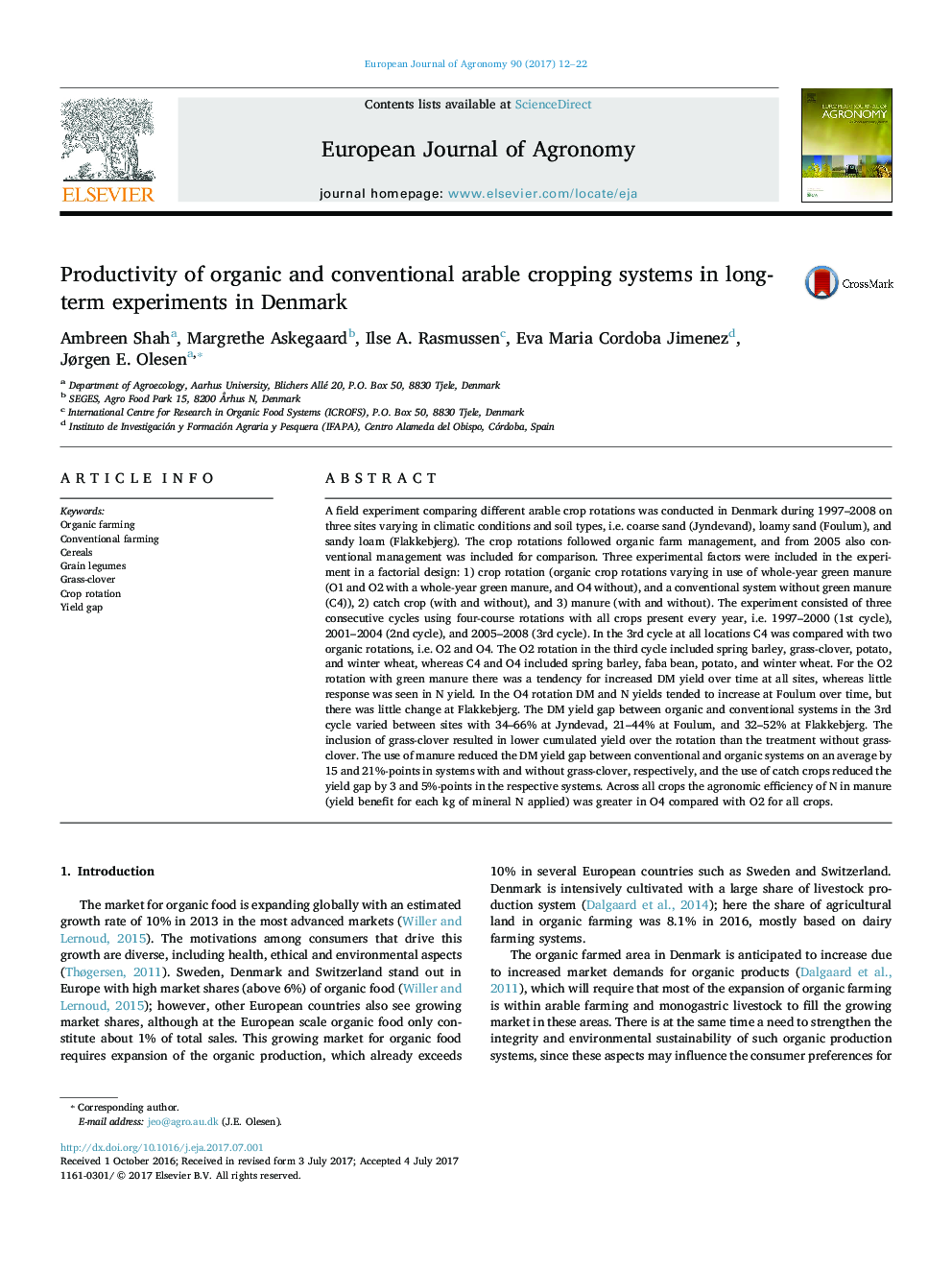| کد مقاله | کد نشریه | سال انتشار | مقاله انگلیسی | نسخه تمام متن |
|---|---|---|---|---|
| 5761178 | 1624434 | 2017 | 11 صفحه PDF | دانلود رایگان |
عنوان انگلیسی مقاله ISI
Productivity of organic and conventional arable cropping systems in long-term experiments in Denmark
ترجمه فارسی عنوان
بهره وری سیستم های کشت آلی و متعارف در آزمایشات طولانی مدت در دانمارک
دانلود مقاله + سفارش ترجمه
دانلود مقاله ISI انگلیسی
رایگان برای ایرانیان
کلمات کلیدی
کشاورزی ارگانیک، کشاورزی عادی، غلات، دانه های حبوبات، چمن شبدر تناوب زراعی، شکاف تولید،
موضوعات مرتبط
علوم زیستی و بیوفناوری
علوم کشاورزی و بیولوژیک
علوم زراعت و اصلاح نباتات
چکیده انگلیسی
A field experiment comparing different arable crop rotations was conducted in Denmark during 1997-2008 on three sites varying in climatic conditions and soil types, i.e. coarse sand (Jyndevand), loamy sand (Foulum), and sandy loam (Flakkebjerg). The crop rotations followed organic farm management, and from 2005 also conventional management was included for comparison. Three experimental factors were included in the experiment in a factorial design: 1) crop rotation (organic crop rotations varying in use of whole-year green manure (O1 and O2 with a whole-year green manure, and O4 without), and a conventional system without green manure (C4)), 2) catch crop (with and without), and 3) manure (with and without). The experiment consisted of three consecutive cycles using four-course rotations with all crops present every year, i.e. 1997-2000 (1st cycle), 2001-2004 (2nd cycle), and 2005-2008 (3rd cycle). In the 3rd cycle at all locations C4 was compared with two organic rotations, i.e. O2 and O4. The O2 rotation in the third cycle included spring barley, grass-clover, potato, and winter wheat, whereas C4 and O4 included spring barley, faba bean, potato, and winter wheat. For the O2 rotation with green manure there was a tendency for increased DM yield over time at all sites, whereas little response was seen in N yield. In the O4 rotation DM and N yields tended to increase at Foulum over time, but there was little change at Flakkebjerg. The DM yield gap between organic and conventional systems in the 3rd cycle varied between sites with 34-66% at Jyndevad, 21-44% at Foulum, and 32-52% at Flakkebjerg. The inclusion of grass-clover resulted in lower cumulated yield over the rotation than the treatment without grass-clover. The use of manure reduced the DM yield gap between conventional and organic systems on an average by 15 and 21%-points in systems with and without grass-clover, respectively, and the use of catch crops reduced the yield gap by 3 and 5%-points in the respective systems. Across all crops the agronomic efficiency of N in manure (yield benefit for each kg of mineral N applied) was greater in O4 compared with O2 for all crops.
ناشر
Database: Elsevier - ScienceDirect (ساینس دایرکت)
Journal: European Journal of Agronomy - Volume 90, October 2017, Pages 12-22
Journal: European Journal of Agronomy - Volume 90, October 2017, Pages 12-22
نویسندگان
Ambreen Shah, Margrethe Askegaard, Ilse A. Rasmussen, Eva Maria Cordoba Jimenez, Jørgen E. Olesen,
